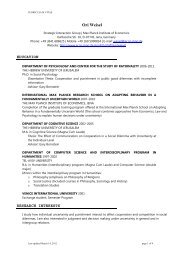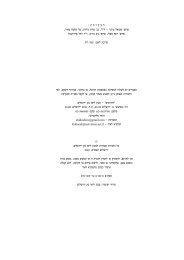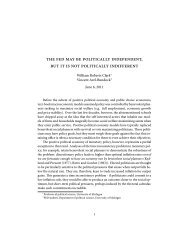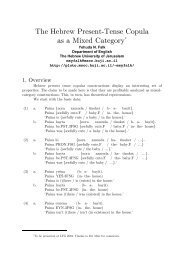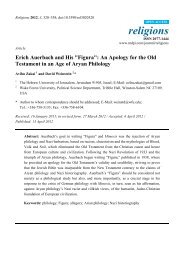Transitive verbs with non-accusative alternation in ... - Pluto Huji Ac Il
Transitive verbs with non-accusative alternation in ... - Pluto Huji Ac Il
Transitive verbs with non-accusative alternation in ... - Pluto Huji Ac Il
You also want an ePaper? Increase the reach of your titles
YUMPU automatically turns print PDFs into web optimized ePapers that Google loves.
82<br />
Rivka Halevy<br />
With tavax ‘slaughter’, another ‘actual’ verb, the same mean<strong>in</strong>g-pattern<br />
dist<strong>in</strong>ction is illustrated <strong>in</strong> (32) and (33) above. With ‘virtual’ <strong>verbs</strong><br />
(Classes 9–11), the bilateral view of the virtual predicational relationship,<br />
triggered by the be- construal, is not only associated <strong>with</strong> the high profil<strong>in</strong>g<br />
of the O, but also <strong>with</strong> the A’s high motivation to be <strong>in</strong>volved <strong>in</strong> the event.<br />
In such cases, the O is perceived as the stimulator, e.g. (7) above <strong>with</strong> ratsa<br />
‘want’, (8) <strong>with</strong> baxar ‘choose’, and (10) and (11) <strong>with</strong> hitxil ‘beg<strong>in</strong>’. In<br />
(11) high profil<strong>in</strong>g of the third order O entity is associated <strong>with</strong> the<br />
<strong>in</strong>tention to go on <strong>with</strong> an action that just begun.<br />
By “restor<strong>in</strong>g” the asymmetrical causal relationship between the core<br />
participants of the transitive event, the prepositional construal evokes a<br />
more complex and vivid scene than the one depicted <strong>in</strong> the pla<strong>in</strong> <strong>accusative</strong><br />
construction. The difference <strong>in</strong> event structur<strong>in</strong>g manifested by the ‘et/be-<br />
<strong>alternation</strong> can be expected to be backed up by other paradigmatic<br />
correlates.<br />
5. The relevance of the notion of ‘contact’ for the transitivity<br />
<strong>alternation</strong><br />
As argued above, the ‘et/be- <strong>alternation</strong> corresponds to the dist<strong>in</strong>ction<br />
between a unilaterally conceived causal relationship (‘et) vs. a bilaterally<br />
oriented and motivated one (be-). The repercussion of the construal choice<br />
on the <strong>in</strong>terpretation of the verbal predicate is particularly visible <strong>in</strong> central<br />
mean<strong>in</strong>g components such as ‘motion’, ‘causation’, ‘change of state’ and,<br />
especially, ‘contact’ (5.1).<br />
Moreover, my hypothesis is that the difference <strong>in</strong> conceptualization has<br />
a paradigmatic value that reaches beyond the transitivity <strong>alternation</strong>. To<br />
verify whether the behavior of <strong>in</strong>dividual <strong>verbs</strong> <strong>in</strong> other diathesis<br />
<strong>alternation</strong>s follows the same rationale, I shall therefore dwell on particular<br />
(<strong>in</strong>)compatibilities of contact-by-motion <strong>verbs</strong> <strong>with</strong> body-part possessor<br />
ascension, causative/<strong>in</strong>choative <strong>alternation</strong>, middle-passive <strong>alternation</strong> and<br />
passivization (5.2).<br />
5.1. General pr<strong>in</strong>ciples<br />
There is noth<strong>in</strong>g new <strong>in</strong> the acknowledgment that various aspects of the<br />
syntactic behavior of <strong>verbs</strong> are tied to their mean<strong>in</strong>g. Common syntactic<br />
behavior is reveal<strong>in</strong>g for shared semantics. P<strong>in</strong>ker (1989) observes that<br />
syntactically relevant aspects of verb mean<strong>in</strong>g resemble the mean<strong>in</strong>gs of



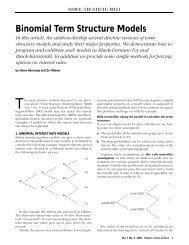
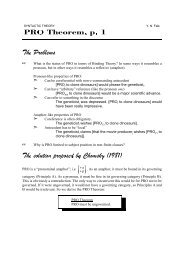
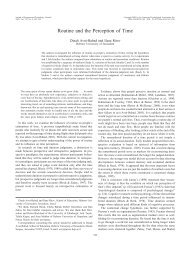
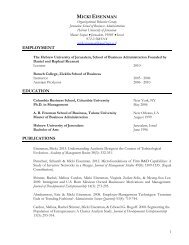
![CV [PDF] - Pluto Huji Ac Il](https://img.yumpu.com/18174585/1/190x245/cv-pdf-pluto-huji-ac-il.jpg?quality=85)

